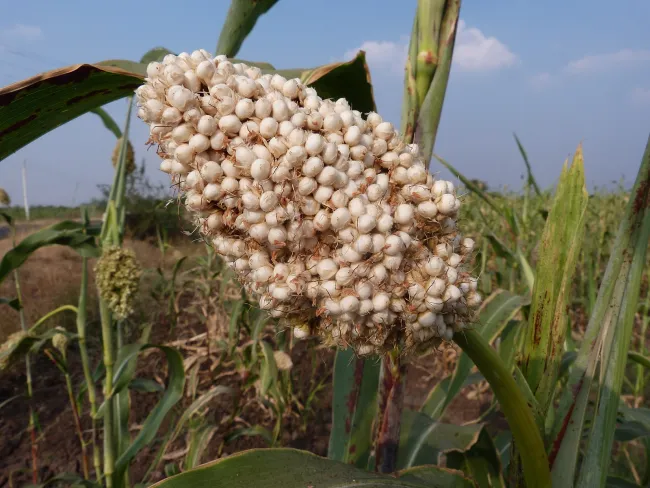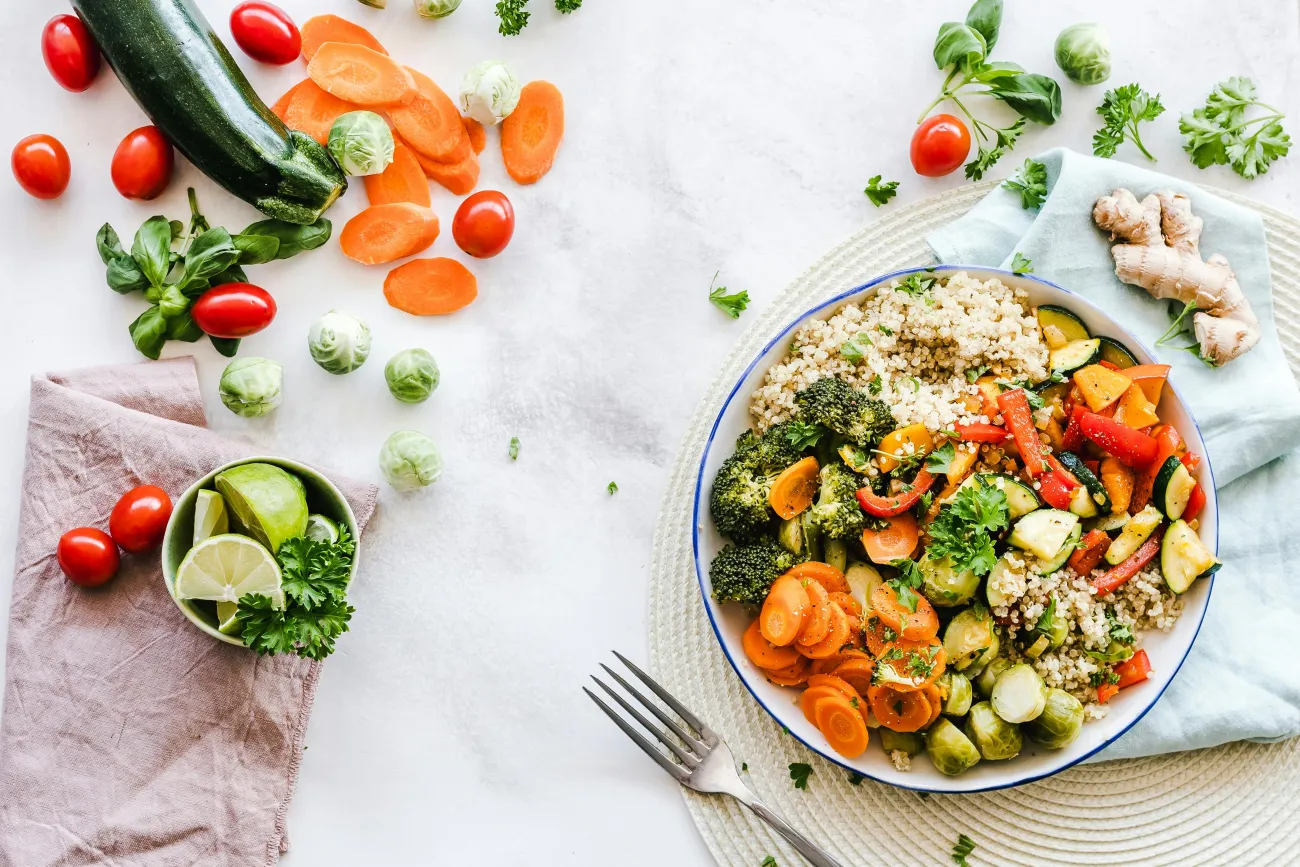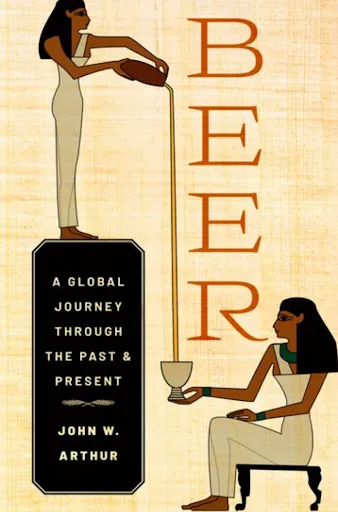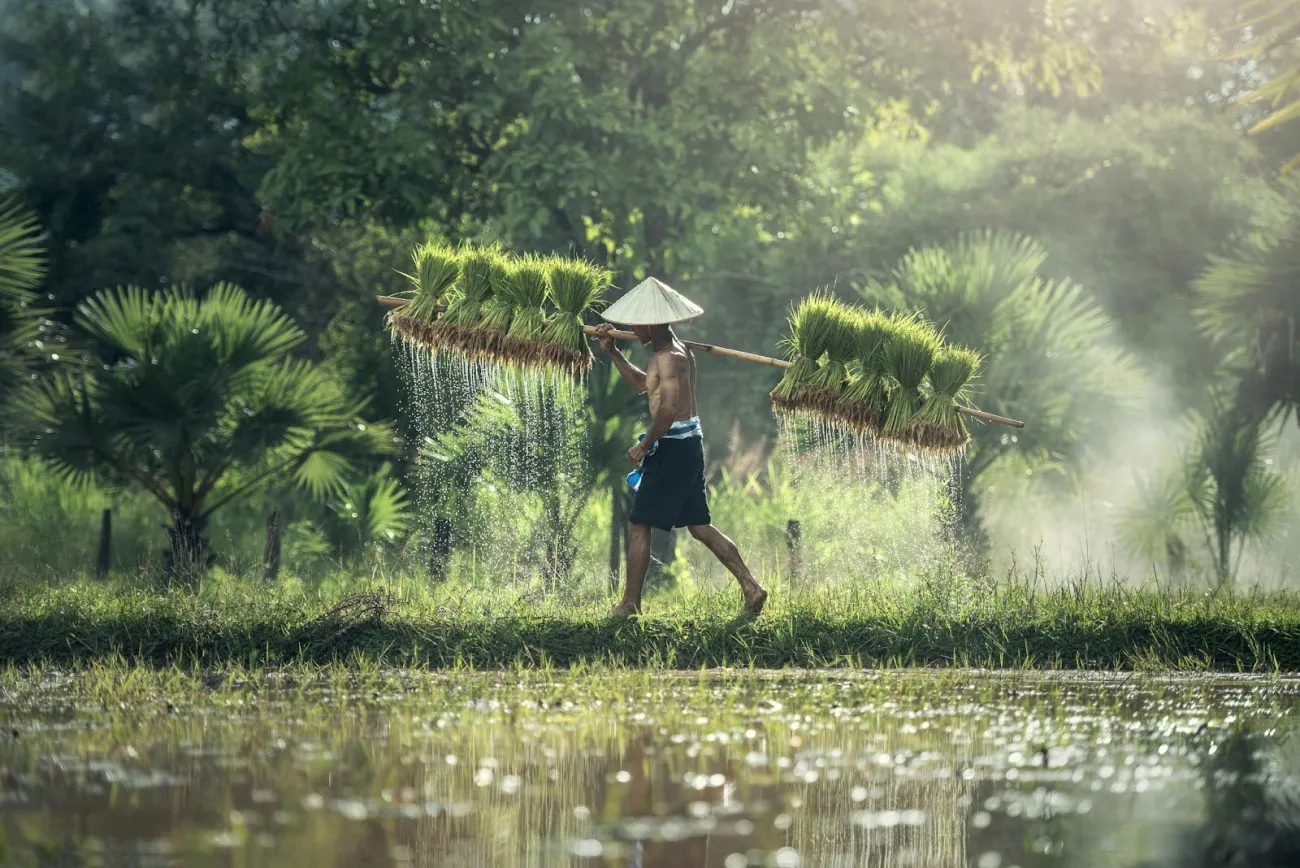This paper finds that replacing some rice cultivation in India with other cereals such as sorghum and millet could improve nutrient supply, decrease carbon emissions and water use, and increase the resilience of India’s food system to extreme weather events.

The paper notes that the Green Revolution was able to triple India’s cereal outputs, mainly through high-yielding strains of rice and wheat. Together, rice and wheat account for three-quarters of India’s cereal production and 60% to 70% of household calorie intake. However, high rice intake has been linked to anaemia in women (due to lower intake of other more nutritious foods), while rice cultivation is less resilient to climate variability and less resource-efficient than the cultivation of other grains such as finger millet, pearl millet and sorghum.
The authors ran several models that optimise the land areas dedicated to rice, finger millet, pearl millet and sorghum for several separate purposes:
- Maximising protein production
- Maximising iron production
- Minimising water use
- Minimising energy use
- Minimising greenhouse gas emissions
- Maximising resilience to climate variability.
The area of land cultivated was held constant, and calorie supply was not allowed to decrease in the model.
The figure below shows the results by share of calories coming from each grain, with current proportions of calorie supply from the four grains shown in the left-hand column. For all six alternative optimisation goals, the proportion of calories coming from rice decreases relative to today.
 Image: Figure 1, Davis et al. Current and optimized shares of monsoon cereal production. These proportions include the 4 cereals analysed in this study—finger millet, pearl millet, rice, and sorghum.
Image: Figure 1, Davis et al. Current and optimized shares of monsoon cereal production. These proportions include the 4 cereals analysed in this study—finger millet, pearl millet, rice, and sorghum.
Abstract
Sustainable food systems aim to provide sufficient and nutritious food, while maximising climate resilience and minimising resource demands as well as negative environmental impacts. Historical practices, notably the Green Revolution, prioritised the single objective to maximise production over other nutritional and environmental dimensions. We quantitatively assess outcomes of alternative production decisions across multiple objectives using India’s rice-dominated monsoon cereal production as an example. We perform a series of optimisations to maximise nutrient production (i.e., protein and iron), minimise greenhouse gas (GHG) emissions and resource use (i.e., water and energy), or maximise resilience to climate extremes. We find that increasing the area under coarse cereals (i.e., millets, sorghum) improves nutritional supply (on average, +1% to +5% protein and +5% to +49% iron), increases climate resilience (1% to 13% fewer calories lost during an extreme dry year), and reduces GHGs (−2% to −13%) and demand for irrigation water (−3% to −21%) and energy (−2% to −12%) while maintaining calorie production and cropped area. The extent of these benefits partly depends on the feasibility of switching cropped area from rice to coarse cereals. Based on current production practices in 2 states, supporting these cobenefits could require greater manure and draft power but similar or less labour, fertiliser, and machinery. National- and state-level strategies considering multiple objectives in decisions about cereal production can move beyond many shortcomings of the Green Revolution while reinforcing the benefits. This ability to realistically incorporate multiple dimensions into intervention planning and implementation is the crux of sustainable food production systems worldwide.
Reference
Davis, K.F., Chhatre, A., Rao, N.D., Singh, D., Ghosh-Jerath, S., Mridul, A., Poblete-Cazenave, M., Pradhan, N. and DeFries, R., 2019. Assessing the sustainability of post-Green Revolution cereals in India. Proceedings of the National Academy of Sciences, 116(50), pp.25034-25041.
Read the full paper here. See also the Foodsource building block Agricultural methane and its role as a greenhouse gas.




Comments (0)